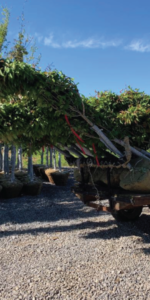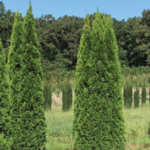The nursery and landscape business is comprised of several thousand small family businesses. These businesses may grow, sell, install and maintain plants for landscaping. According to the research done by USDA’s Economic Research Service, the nursery and greenhouse industry is by far the fastest growing aspect of U.S. agriculture. Different nursery jobs will produce organic matter in the form of pruning trees and reducing waste. Plant nurseries and greenhouses are the top five goods that grow plants in over 25 states. The nursery and landscape industry is a great side business for owners of a large amount of agriculture. Many higher-end nurseries with lots of experience, started by working on dairy or grain farms or as a simple hobby or family job. In addition, the nursery business is Internet-friendly, and many companies will do direct sales through mail orders and different websites.
There are many benefits of planting nursery trees:
Financial Aspect
Plant nurseries encourage and help provide for the gardening desires someone has. In addition, they can also be set up for great potential in the commercial aspect. As young samplings are grown on a broad scale in plant nurseries, they can be sold in the future for food or restoration.
Encourages Gardening
In the world we live in today, it is very easy to take our ecosystem for granted. Plant Nurseries serve as a constant reminder that there is an ongoing method for keeping and advertising the importance of green life.
Utilizing Space
If you have a large area in your home that stays empty, then it would be perfect to take up the space and turn it into a small plant nursery. This does not have to be elaborate and can allow you to utilize and keep the space you have as well.
Develops growth of plant vegetation
Nurseries are a perfect place to have different varieties of plants that can be ornamental, herbal, or sometimes even used for vegetation harvesting. Nurseries give the proper care for a large variety of different plants.
Planting nursery trees have endless amounts of benefits. They are multi-functional and can add the perfect bit of love to any home. Some of the most common varieties of nursery trees people enjoy planting for landscaping are oaks, pines, dogwoods, and variations of maple trees.










Recent Comments